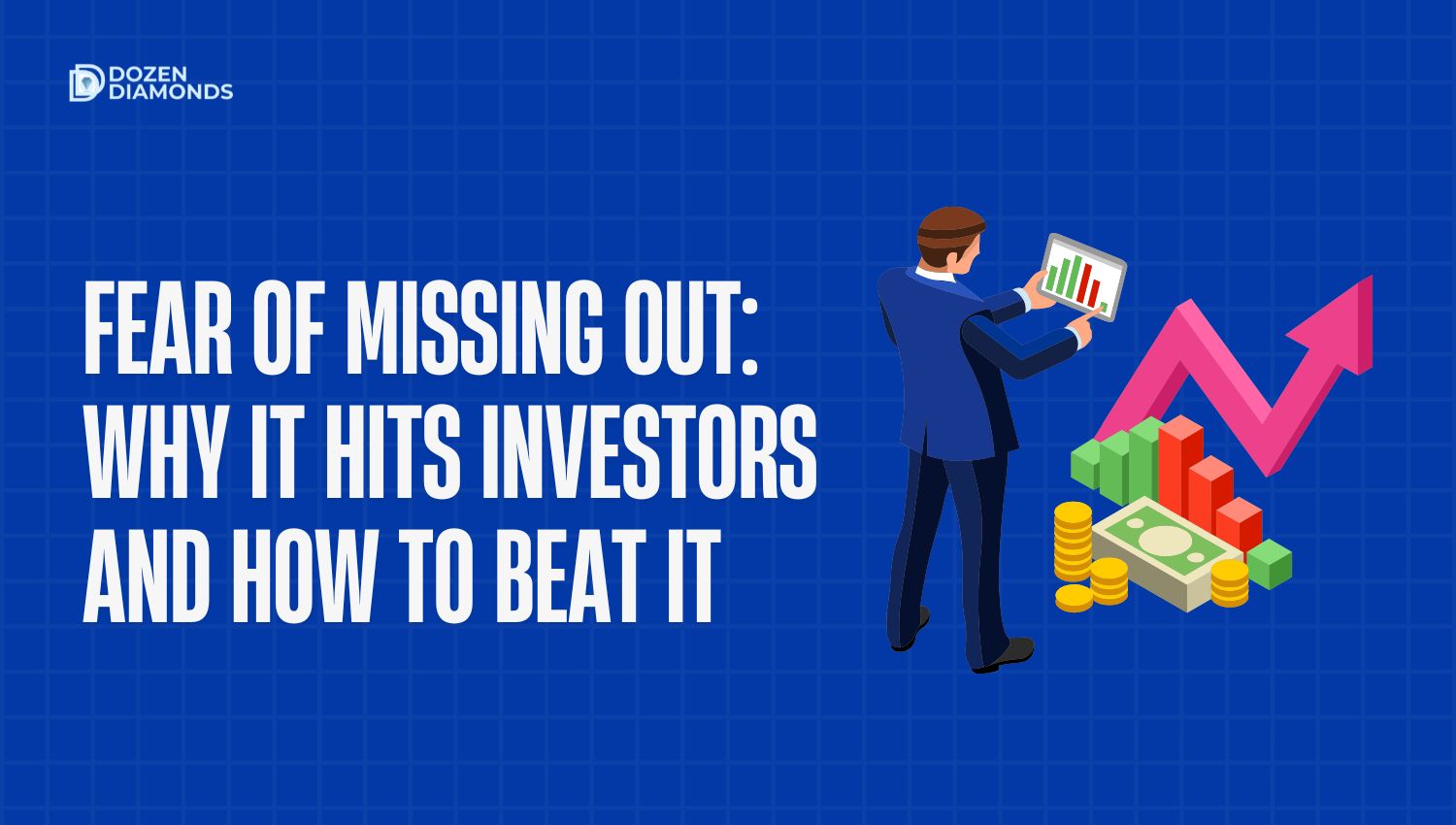Fear of Missing Out: Why It Hits Investors & How to Beat It

Table of Contents
Introduction
When you finish reading this post, you’ll have 3 clear, actionable strategies to overcome FOMO (Fear of Missing Out) in investing and make more rational trades.
These techniques are backed by real investor data and behavioral finance research (see the study on FOMO’s link to overtrading and regret) ResearchGate.
You’ll discover:
- How FOMO manifests in your investment decisions — so you can spot it
- Concrete steps to push back against hype and urgency
- A simple checklist to apply every time you feel “I’m missing out”
What Is FOMO & Why It Matters in Investing
“FOMO,” or Fear of Missing Out, is the anxiety that others are experiencing gains, opportunities, or experiences that you are not part of. Wikipedia
In investing, FOMO shows up when you jump into hype stocks or trends simply to avoid “missing the run-up.” Investopedia
Because markets are emotional, FOMO can trigger overtrading, chasing momentum, and worse performance.
How FOMO Distorts Decision Making
- Overtrading and excessive buying at peaks: Instead of waiting for favorable setups, you buy because “everyone else is doing it.” Research links FOMO to higher trading frequency and lower net returns. ResearchGate
- Ignoring fundamentals / risk: You might skip the due diligence and jump into a ticker simply because it’s “hot.”
- Regret bias & recency effect: You feel regret if you didn’t buy the recent winner, so you are more likely to overcommit next time.
Evidence from Research
- A dedicated study showed FOMO strongly correlates with speculative investing, emotional reactions, and herd buying in stock markets. ResearchGate
- In the realm of IPOs, emotion-driven social media hype leads to inflated initial returns and then sharp corrections. arXiv
- Behavioral finance papers argue that FOMO acts like a “risk multiplier,” pushing people into downside when trends reverse. ResearchGate
Common Triggers Investors Face
- Social media and hype threads (“This one is going to the moon!”)
- Charts breaking out (FOMO says: “I must ride this momentum”)
- Latecomers fear (“I should have bought when it was cheap”)
- Scarcity language (“Limited time,” “Only few left,” “First 100”)
- Peer bragging (“He made 5x in a week — why didn’t I?”)
Most articles talk about psychology, but few emphasize how social and algorithmic amplifiers (forums, trending tickers, Reddit/Twitter) push FOMO further. That gap is addressed below.
What Most Solutions Miss: Role of Social Media & Herd Signals
- Modern platforms amplify FOMO: trending stocks, alert notifications, alerts about peers’ gains. Algorithmic trending feeds create feedback loops: more attention → more buying → more attention
- Herding is stronger when uncertainty is high (e.g. macro news, earnings season)
- Most solutions don’t teach how to resist algorithmic nudges.
Three Strategies to Defeat FOMO
Strategy A: Pre-commit with a Playbook
Decide in advance the conditions under which you’ll invest or use automated data-driven algo platform like Kosh App. That way, hype alone won’t drive you.Strategy B: Set “FOMO budget”
Designate a small portion (say 5–10%) of your capital for speculative trades. Let the rest follow your core, less risky strategy (index, value, etc.).Financial planners recommend this as a “sandbox” for emotional risk. Access Financial Planning
Strategy C: Delay & Vet Method
Whenever you feel “I must buy now,” pause 24 hours (or one trading session). Reassess with criteria:- Does it still look good without hype?
- What’s downside vs upside?
- If it drops 10%, am I okay?
Example / Case Study
Let’s take a meme stock run: the frenzy attracts late buyers who buy near the top. After the peak, the price collapses. Those who entered early or had rules may exit or ride, but late entrants feel regret and panic.
One real example: The recent AI-stock mania saw valuations stretch as FOMO from retail investors poured into private / SPV structures. Business Insider
Checklist: Your Personal FOMO Shield
| Step | What You Do | Why it Helps |
|---|---|---|
| 1 | Identify FOMO trigger (social post, breakout, advisor tip) | Name the feeling |
| 2 | Check fundamentals / growth metrics | Avoid hype-only investment |
| 3 | Pause 24 hours / sleep on it | Let emotions cool |
| 4 | Check your “FOMO budget” limit | Prevent overexposure |
| 5 | Use breakout criteria (volume, confirmation) | Confirm signal, not noise |
Final Thoughts & Common Pitfalls
- FOMO is natural — you won’t eliminate it, but you can manage it.
- Avoid comparing your performance to hype traders — many don’t report their losses.
- Beware of ignoring macro / risk — when trends reverse, FOMO-driven trades get hit hardest.
- Overconfidence is a sneaky side effect: after one “successful FOMO trade,” you may wrongly trust hype more.
Next Step
Download Kosh App to experience automated stressless FOMO free trading.